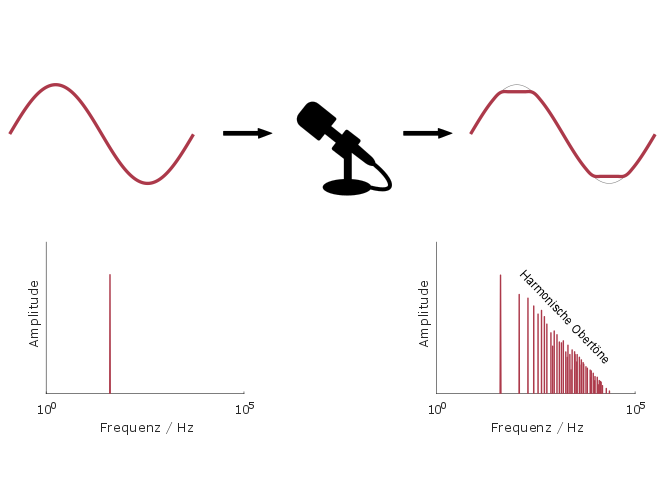In Practice
Typical values of modern condenser microphones for the maximum sound pressure level at 0.5% THD lie in the range of 130 dB (e.g., SCHOEPS MK 4 + CMC 6: 131 dB). These are sound pressure levels that correspond approximately to the pain threshold of the human ear, i.e. very loud sound events, which occur only rarely when recording instruments. For example, a very close-miked snare drum produces sound levels in this range; a human voice at very close range only in exceptional cases. The vocal microphone V4 from SCHOEPS, with an even higher maximum sound pressure level of 144 dB at 0.5% THD, can even record a rifle shot from a distance of less than one meter without distortion.
For microphones with an amplifier whose maximum input level is lower, it is recommended to reduce the level before the capsule electronics with an attenuator (e.g. PAD 10 C). Since an attenuator reduces the sensitivity of the microphone and thus increases the noise, it should only be used for very loud sound events. In general, as a customer, you should be more careful when microphone manufacturers advertise a high limit sound pressure level. It should not be forgotten that even the sound itself is already heavily distorted at such high sound pressures.
If a sound event is very loud, in addition to the microphone itself, it can also cause clipping at the input to which the microphone is connected (such as the preamp or mixer), which is often mistakenly attributed to the microphone. In such case, it is recommended to generate a reduction of the level by means of a so-called "pad circuit". Ideally, this circuit is close to or in said input device. This reduces the amount of noise induced in the microphone cable relative to the useful signal.


